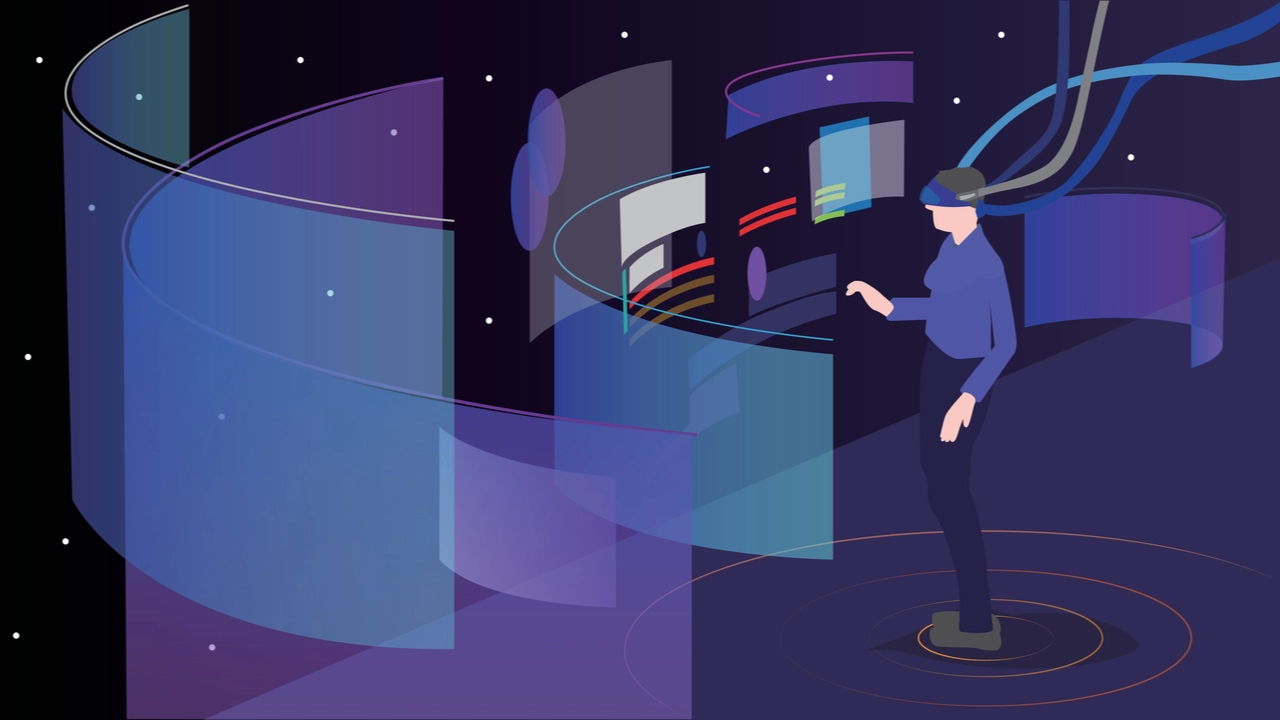Is Metaverse Just a Futuristic Concept?
We’ve all seen Ready Player One and Microsoft’s Horizon Workrooms, but what about the fundamental concept behind Metaverse? What does Neal Stephenson have in mind for this future-looking world? And is this technology possible? Read on to find out. This futuristic concept may be closer than we think! Until it’s developed, the Metaverse is merely a futuristic concept.
Table of Contents
Ready Player One
The story of Ready Player One and the Metaverse questions our dependency on technology, loss of social ties, and the idea of reality. The characters in the movie live a parallel existence within a virtual world known as OASIS or the “Oasis of Awe.” They do not exist at all, as they are just avatars. The novel’s dystopian world of 2045 depicts a world plagued by global warming, energy crisis, and social issues. Eventually, this world is a virtual trash can with caravans and cyborg orcs instead of significant buildings.
The real world of Ready Player One is split into OASIS’s sectors or worlds. These sectors have rules and systems for interacting with the virtual world. The digital lands in RFOX VALT are broken down into quarters or regions, with 25 different shop slots available for the user to purchase. The player earns credits as he performs tasks, defeats enemies, and wins battles. He can then spend these credits on real-world purchases.
The Metaverse, or virtual society, is another fascinating aspect of the Ready Player One story. In the future, Cline imagines the creation of a service to stream video games into people’s lives, where followers can travel through a series of virtual worlds. In addition, he predicted that this virtual world would improve the education and empathy of its citizens. While there are still questions about how the technology works, the concept is fascinating.
The game uses VR technology to simulate the full-body suit used by Wade. The virtual reality graphics and haptic touch are more realistic than anything available today. But one major flaw in this novel is the current technological state of VR headsets. While a VR headset can be used to play games, it will not be able to access metaverse platforms without a computer.
Horizon Workrooms
A new type of virtual workspace is being developed by Horizon Workrooms that uses the latest technologies, such as hand tracking and mixed reality desktop tracking, to provide a more natural experience for users. Users can view their computer screens, hear others’ screens, and integrate video and spatial audio. The technology is also compatible with Outlook and Google calendars and will give users a persistent address when the space is not in use.
Although Facebook’s Horizon Workrooms were previously branded as Facebook, the new technology is being developed by a company in Menlo Park, CA. It is the first commercial act in Zuckerberg’s metaverse plans, and it promises to expand the office’s role to the realm of virtual reality and VR. While Facebook may see this new technology as a revenue center for the company, it will need many years to mature.
Despite its limited functionality, Horizon Workrooms can already meet most of your business needs. This new virtual workspace is compatible with desktop and mobile platforms and supports up to 50 users. The new application also features a whiteboard with infinite resolution and a pen-like controller for editing and sharing content. You can even project files from your PC to the whiteboard. You can also share videos with other users.
Facebook is trying to make the social network more immersive by developing new hardware and apps. The social network aims to enter the Metaverse with a new brand, Horizon. The company is also testing the application, Horizon Workrooms for professionals. With this new software, Facebook hopes to make work more enjoyable and productive for their employees. There are no limits to how far this technology can go. If Facebook successfully introduces Horizon Workrooms in the Metaverse, it will be a big deal.
Read More: Is Ready Player One an Example of a Metaverse?
Microsoft
There are two competing visions for Microsoft’s Metaverse: the top-down approach of the company, which is building its enterprise offerings around the concept of a virtual world, and the bottom-up approach, which is bringing all consumers into the virtual world. Microsoft’s goal is to make Meta the future workplace, while Meta is building a world in which people work and play.
The focus on the Mesh platform and the Hololens augmented reality headset is a logical step for Microsoft. It enables new business applications, and the company wants to expand its application range beyond gaming and entertainment. The Hololens, already widely used by manufacturing professionals, allow people to learn processes more quickly and accurately than traditional methods.
The industrial Metaverse will utilize cloud computing and company technologies to help factory workers construct products and services. It will help create a “digital twin” of a workspace to expedite adding new production lines or making repairs. This approach will require significant time, money, and expertise.
The company has already announced the first steps toward introducing its Metaverse, referred to as Mesh, in its Microsoft Teams product. The platform will use AI-powered resources to create a “shared sense of presence” on the devices. It’s close to the original concept of a metaverse. With Mesh, people can immerse themselves in immersive worlds from any device and interact with others seamlessly.
While the Metaverse is still in its early days, Microsoft is positioning itself as a leader in the virtual economy. Its Xbox gaming platform consists of multiple mini-gaming metaverses that transport players to a new world when they turn the console on. The company also unveiled the HoloLens mixed reality headset in 2016, and the HoloLens is set to revolutionize the gaming industry with its augmented reality technologies.
Neal Stephenson’s Original Vision For Metaverse
Despite the resurgence of the Metaverse as a new science fiction genre, there are still some problems with Stephenson’s vision. First, the Metaverse is a place where evil exists. As the dystopian world in Snow Crash shows, evil exists both inside and outside the Metaverse. In Stephenson’s novel, evil is widespread because the Metaverse’s structure allows chaos to exist within the digital boundaries.
The Metaverse in Stephenson’s novel Snow Crash is a persistent virtual world accessible to individuals through specially designed goggles. There, people can meet, create things, and even earn money. The impact of this concept on our reality is profound, and Stephenson has since worked with many tech companies in Silicon Valley, including Magic Leap and Jeff Bezos’ Blue Origin. Here, we’ll learn how his original vision for the Metaverse might influence the future of technology.
The Metaverse is a virtual reality-based internet. Users access it through a personal terminal, which projects a high-quality virtual reality display onto their goggles. Users can also use low-quality public terminals in booths, but these terminals will only display a grainy black-and-white image. As the Metaverse becomes more accessible, a subculture grows around people who stay connected through personal terminals and goggles. While in the Metaverse, they experience virtual reality from a first-person perspective.
In the first book of the series, Neal Stephenson’s vision for the Metaverse was based on the concept of a platform for humans to interact with each other in virtual environments. But this vision is far from perfect – it lacks depth and clarity and is cartoonish in its execution. Similarly, it limits users’ ability to explore beyond their environments. It must be governed by rules and safeguarded from ‘fringe’ groups.






Leave a Reply